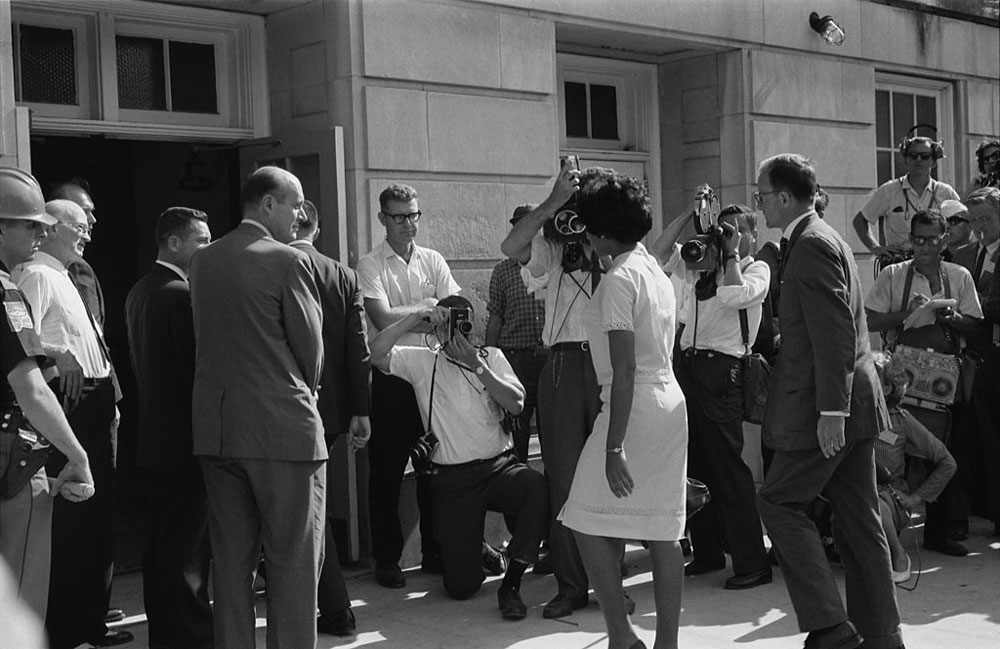
October 7, 2019; K-UAR Public Radio, Democrat-Gazette, and the Associated Press
It was over 60 years ago, back in 1957, when the city of Little Rock, Arkansas, drew national attention as a small band of heroic high school students marched through angry crowds to Little Rock Central High School asking to be given what they were due—the same education as their white neighbors.
In 2015, amid a national frenzy to improve student performance, the state of Arkansas assumed direct control of Little Rock’s public schools. Their goal in taking this action, one right out of the school reform playbook, was to save “failing schools” and eliminate local educational leadership, elected and appointed, that they saw as letting the city’s students down. Now, five years later, the Arkansas State Board of Education has put forward a plan to return some of Little Rock’s schools to local control in a manner that, to some, revisits the days of segregation.
In January 2013, Arkansas raised its performance targets for public schools. Six months later, because one elementary school, two middle schools, and three high schools among the district’s 48 schools did not meet the revised standards, the state Board of Education stepped in, eliminated the elected school board, and took direct responsibility for educating Little Rock’s children. The plan was for this new structure to remain in force for five years, a time period that state leaders hoped would be sufficient to improve school performance.
For a school district that stands as a symbol of the difficult process of breaking down the barriers of school segregation, the loss of local control evoked a fear of a return to those bad old days. But a plan to return local control approved last month by the Arkansas Board of Education brought forth a new round of concerns about segregation and racial discrimination. The state’s plan designates eight of the city’s schools for special treatment, which would keep them substantially under state control and separate from other schools, which would fall under the full control of a new elected school board. All but one of those eight selected schools are in predominantly black neighborhoods, separated by interstate highways from other, predominantly white communities and schools that would be locally led.
The eight schools were selected because their academic performance still rates an F on the state report card. Even though direct state supervision over the past five years failed to improve their performance, the state still contends that local leaders would be less capable of improving student outcomes than state managers. Republican Governor Asa Hutchinson, in comments reported by the Associated Press, says, “If the state ignored the academic performance measures and returned all schools without sufficient support, then we would surely have dedicated civil rights lawyers that would immediately be filing a lawsuit saying we’re not meeting our obligations.”
Opponents of the plan call for the state to provide the necessary resources to serve Little Rock’s children and let the local community step up and manage the schools. They see the state’s failure to let a resident-elected school board oversee the schools as a continuation of white supremacist thinking. Stacey McAdoo, a Little Rock high school teacher and the state’s current Teacher of the Year, in an op-ed for the Democrat-Gazette, said she sees race as the driving reason behind the proposal:
Sign up for our free newsletters
Subscribe to NPQ's newsletters to have our top stories delivered directly to your inbox.
By signing up, you agree to our privacy policy and terms of use, and to receive messages from NPQ and our partners.
The real difference is that the schools in those black and brown communities will continue to pay full property taxes yet will have no input in school governance. It is a return to separate and unequal. Without a doubt, these schools need help. But help is not a plan that robs my community of input on education. Help is one democratically elected board for the entire district with support from the community at large to provide the essential services and resources that will enable our students to thrive both inside and outside of the classroom.
Vicki Hatter, a Little Rock district parent, added her voice to the protests. “We deserve one district—not a three-tiered district, not a segregated district, not a district with two leaderships. We deserve one district, one full district, and a duly elected school board.”
Questions were raised about why the state saw these predominantly black schools as still needing special treatment while other, similarly performing but white schools in other parts of the state were not taken over.
Little Rock’s mayor, Frank Scott Jr., speaking for his entire city board of directors, said, as reported by KUAR public radio, “Any plan that separates any schools from LRSD denies agency for the very students, teachers, and families who must take ownership of their schools if they are to thrive.” Scott also proposed a revised plan that would invite the state to partner with local leadership. So far, they still await a response from state leaders.
The last five years demonstrate that state leaders have little to offer Little Rock’s schools, particularly those whose students live in economically and racially restricted communities. A steadily growing body of knowledge tells us too that student outcomes in schools often are a product of social and economic factors outside the school walls. In short, school “failures” are hardly a product of educators alone.
One benefit of local leadership is enhanced sensitivity to local conditions. This includes building networks of support around the educational experience to provide better chances for student success. What state leaders can do is make sure the funds are available to empower local leaders to provide those supports.—Martin Levine











